#rookie magazine
Text

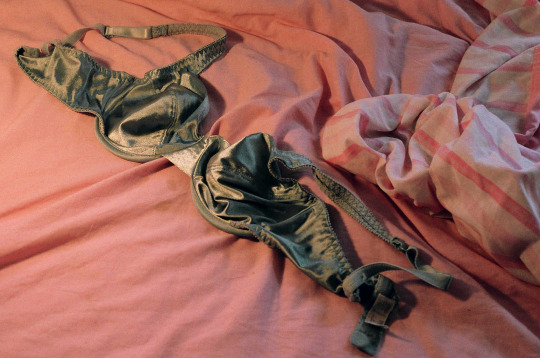
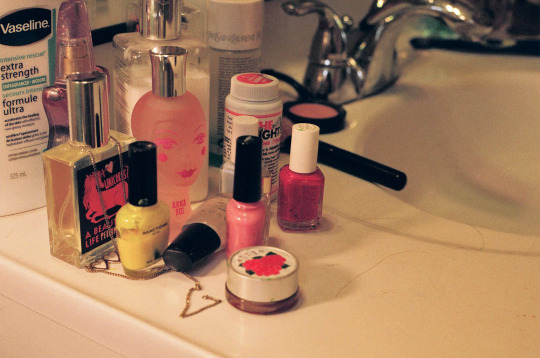
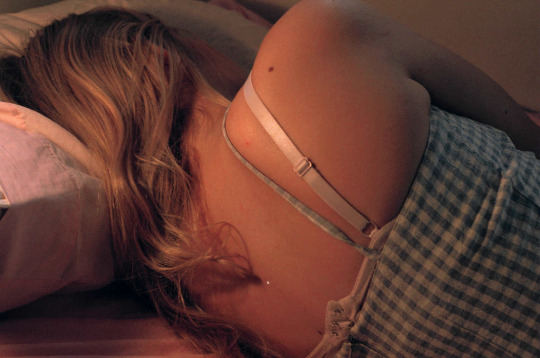
doll parts
by petra collins for rookie magazine
—> source *
2K notes
·
View notes
Photo

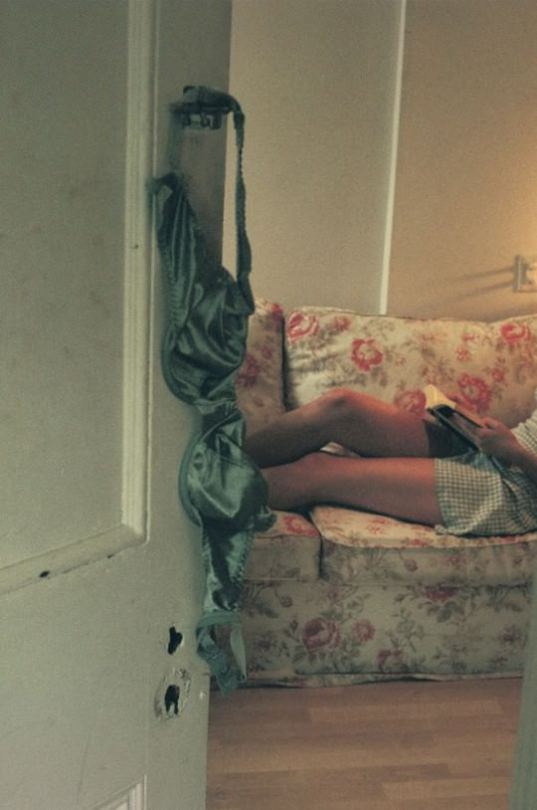
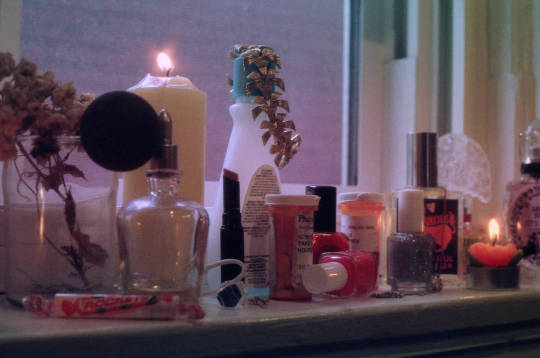
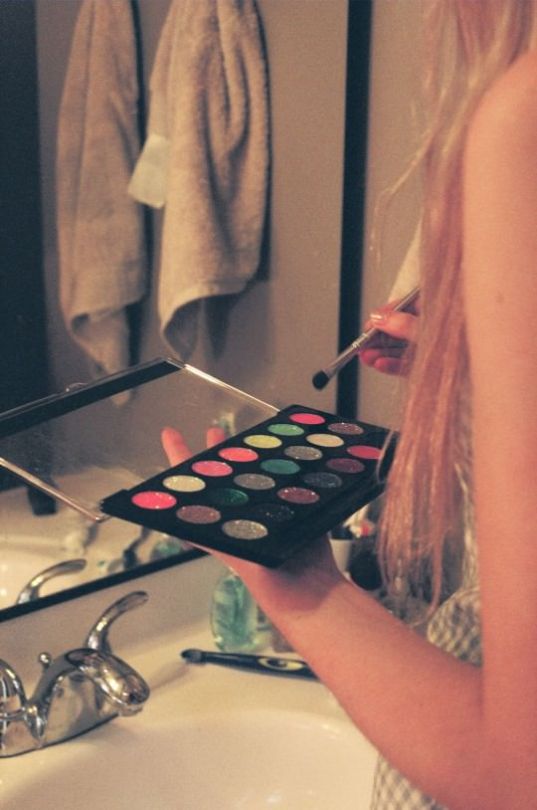


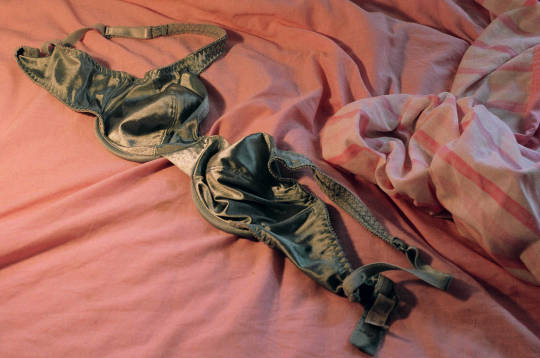

Petra Collins for Rookie Mag, Doll Parts (2011)
#aesthetic#angelic#angelcore#coquette#dollcore#female manipulator#femcel#girl interrupted#hyper feminine#my year of rest and relaxation#petra collins#rookie magazine#room inspo#sofia coppola#the virgin suicides#2014 tumblr revival
4K notes
·
View notes
Text
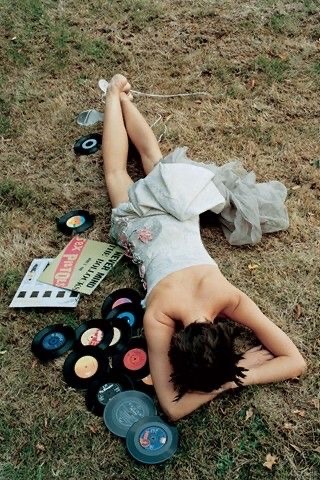
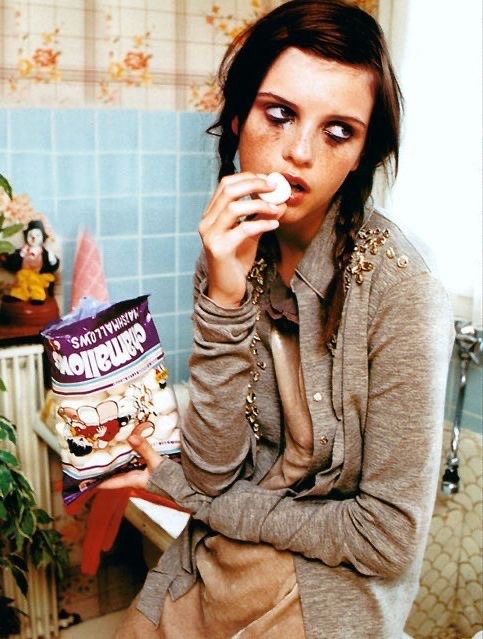





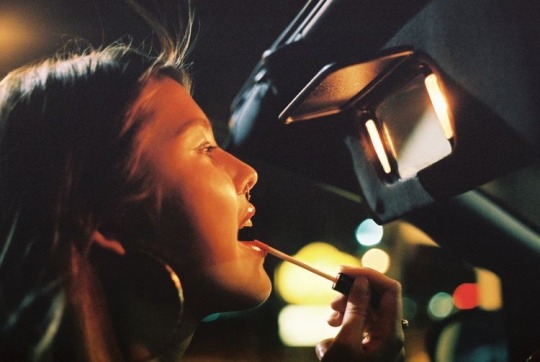


Vibe for my upcoming photo shoot
#film photography#photography#photoshoot#petra collins#2014 tumblr#rookie magazine#coquette#cory kennedy#indie sleaze#girl interrupted#grungette#kate moss#sky ferreira#twee#moodboard#summer vibes#art#childhood#teenage years#nastalgia
2K notes
·
View notes
Text
youtube
Check out my short film Penpals! It’s a four minute long sci-fi comedy about penpals from different planets.
#don’t look at the tags it’s a million things#animation#senior thesis film#capstone film#Animated short#Sci-fi#pizza delivery#blimps#interdimensional#gay#lesbian#sapphic#rookie magazine#adventure time#chowder#broad city#joe pera#vewn#jonni phillips#gobelins#steven universe#hitchhikers guide#the hitchhiker's guide to the galaxy#hgttg#voltron#depaul#chicago#Penpals#retro futurism#welding
77 notes
·
View notes
Text

santigold in vampire weekend's "diane young" music video x
58 notes
·
View notes
Text

40 notes
·
View notes
Text



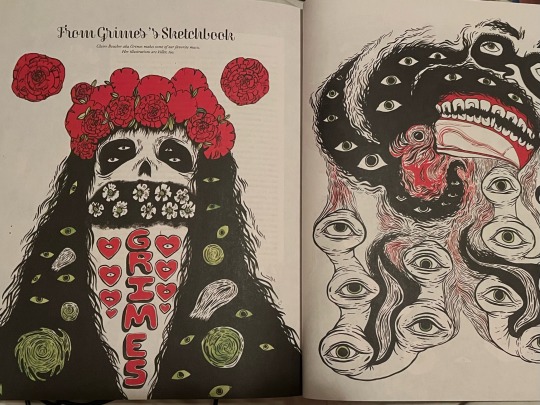


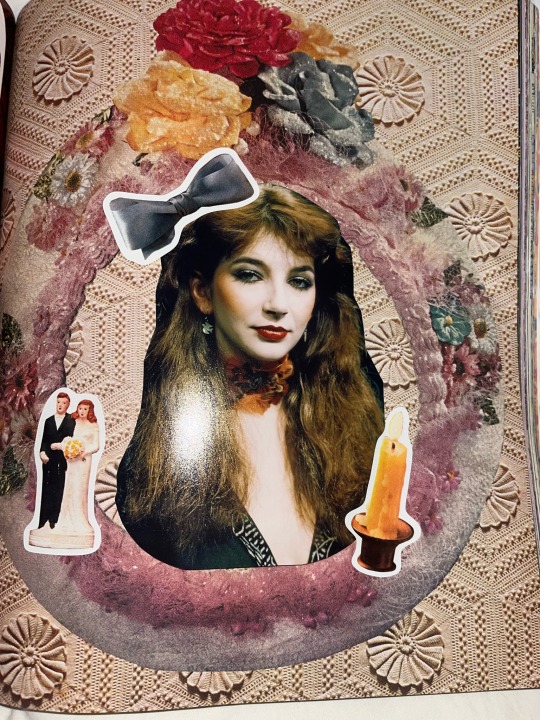

vibesmaxxing
9 notes
·
View notes
Text





Anya Taylor Joy in 2011 for Rookie magazine
30 notes
·
View notes
Text

I Thought I Wanted This / It / You by @magpiecollages (on tumblr and ig)
#artsy#artwork#art#artist#making collages#collaging#collage#rookie#rookie magazine#rookie mag#pretty#beautiful#photo#photography#artist on tumblr#artist on instagram#magpiecollages#feels#blue#violet#purple#red#yellow#colorful#pink#i thought i wanted it#i thought i wanted this#i thought i wanted you#heartbreak#love
127 notes
·
View notes
Text
does anyone remember rookie mag’s playlists? let’s pretend I’m a guest author sharing her quirky/relevant/relatable collection of current faves (my teenage dream)
songs that make me feel like I am living my life as a gen-z woman
“butterfly” - grace ives
“golden” - zella day
“haircut” - petey
“afraid” - mimi bay
“the dress” - dijon
“deadman” - souly had
“bound” - wet, blood orange
“last night” - dabeull
“im a rock” - jitwam
“vacation” - florist
“sometimes (backwood)” - gigi perez
13 notes
·
View notes
Text


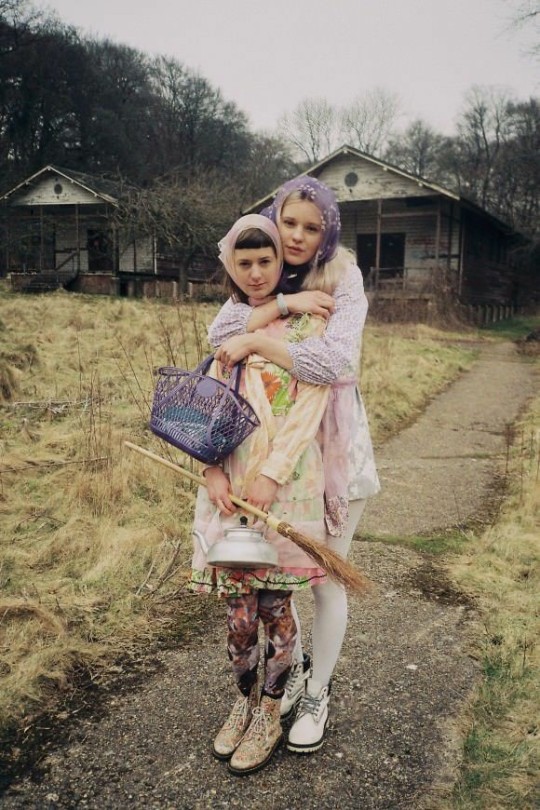

i fell into a tavi gevinson/rookie mag rabbithole. so cool :( i wish i knew about the magazine when i was younger, i feel like they paved the way💌
106 notes
·
View notes
Text
Fascism/Flop Eras/The Art Of The Rebrand
If the tone of this post is completely different from last week it’s because my prozac just started working!! If i came off as obsessive and impulsive it’s because i was!! i’m working on it 😁
Alright, Where did we leave off?…
Emotional Terrorism I believe it was-

I now see how entirely dramatic this phrase is(tysm prozac). I probably need to watch my provocative language, I’ve never In my life been a chill or fun girlfriend.

If “emotional terrorist” is a fitting title for any of these people honestly who could blame them, i’m basically an emotional fascist. After my regime is overthrown I have to rebrand obviously.

Teenager’s (and me), are calling this “having an era” . A little google action reminded me this all started with the “Flop Era”
This is what a flop era looks like for the unfamiliar:
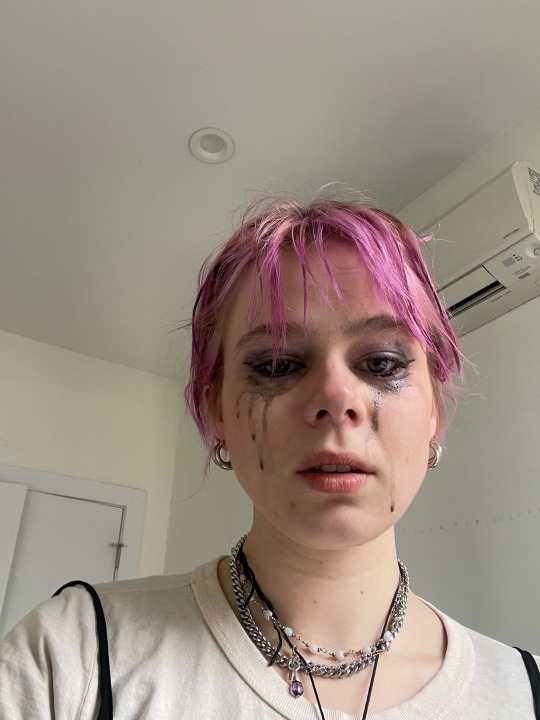
this is what getting ur emotionally fascist empire taken down by a emotional terrorist does to a mf
#bringbackcryingselfies
i think i almost bought a “flop era” tshirt in 2021 but i went with ironically hot instead
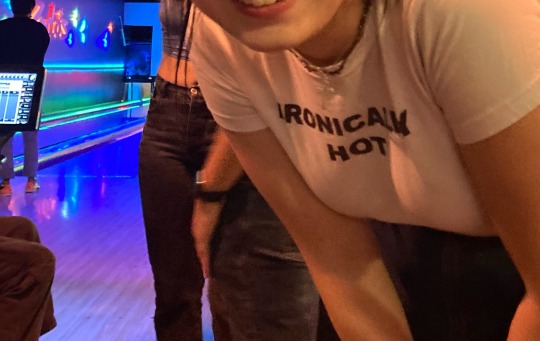
simpler times…lol
Anyway all the sudden everypony online was in their fleabag era or their reputation era. It’s 2023 Taylor Swift’s having her eras tour and now I barely remember who I was before it became a part of the cultural zeitgeist for a normal non celebrity girl to have definable eras.
here are a few favorites of mine:
i don’t endorse any of these eras also i think i probably do this to an unhealthy degree
bpd grrl era:
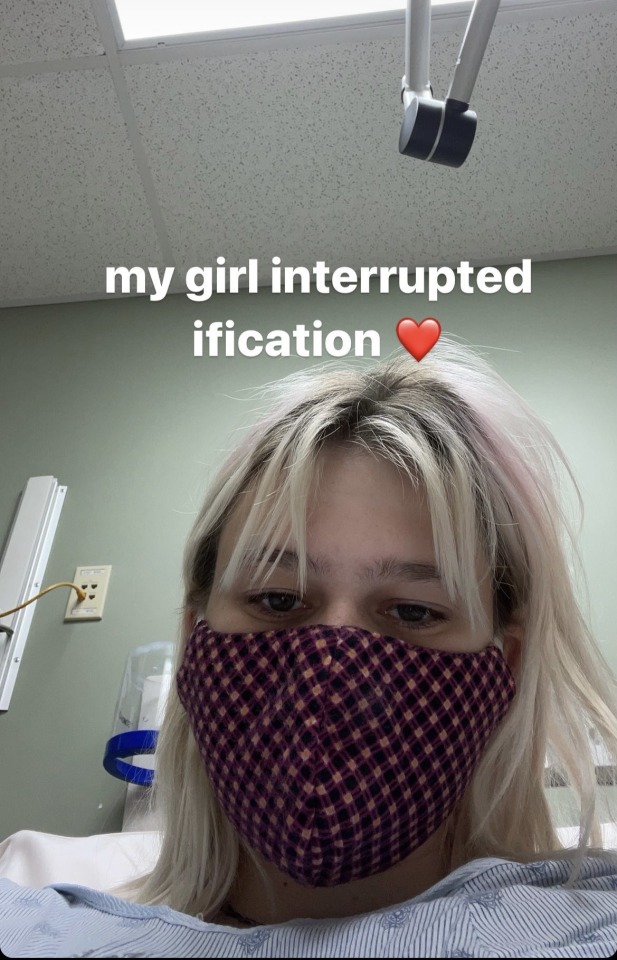
grunge post woke fleabag on vyvanse era:
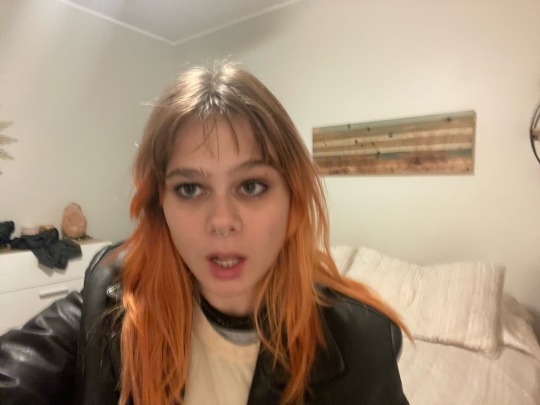
the I ready theory (only lasch) era

looking like I play a [REDACTED] in a [REDACTED] era:
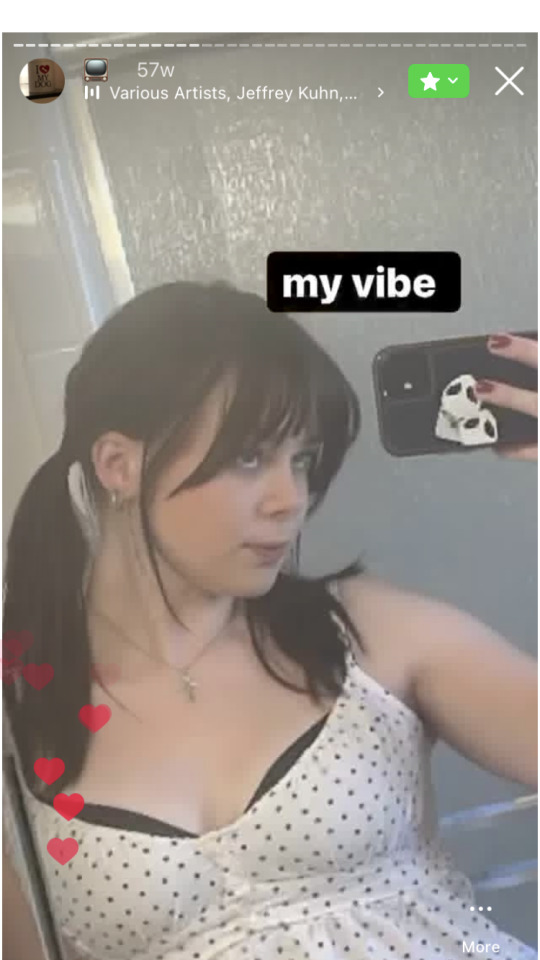
Rebranding isn’t a new thing at all but hyper specific digital language used to describe how you express yourself obviously is and this is a tired conversation at this point.
How is “I’m in my looksmaxxed bushwick kinderwhore era” a thing you could say and how did I get to a point in my life where i know exactly what that would mean. It’s internet buzzword salad and it feels like it’s too much information for my brain to be storing and holding onto at all times (is this where my ancestors kept the berry forageing knowledge? is this really what i’m using it for??)
quick grass touching break 4 u

whatever mental illness i have was designed to pick this shit apart for hours so sometimes this all drives me a little nuts but it’s ok cause i’m a mental health warrior💪🏼
When you feel it’s time for your new era you could sift through pinterest rabbit holes and tiktok echochambers trying to find the perfect niche that describes the new and improved you. You’ll probably find a corner of the internet with other people just like you who like all the same esoteric celebrities you do, who listen to the same underground bands and who all talk the same cool way. But they are all doing it a little better than you.
Then you wake up from the digital coma you slipped into from stemming from unsupervised internet access at a young age, and you realize this is the dumbest shit in the world and ur actually and literally a full ass adult..
🎀Here is my personal plan of action for a non internet poisoned rebrand:🎀
Step 1- The Transformational Event
This could be a breakup, a breakdown, a move, or just a general realization that challenges all ideas you previously had about yourself.
Step 1.5- Deep Emotional Pain
😁
Step 2- Get Ur Ass up
Envision the you that has moved on and no longer feels held down by the emotional weight of the situation. How do they spend their free time? What passions are they pursuing ? what kind of people do they surround themselves with? lastly how do they dress how would they adorn their space? Work from the inside out.
Instead of looking up glass skin healed french girl aesthetic on pinterest you could journal about this version of you or even make a physical vision board.
Step 3- Faking it
Initially you might feel like you are not mentally stable or cool enough or whatever to be this person. But the person is you and the only way you can become them is to just start.
Step 4- God and Faeries take over
Spoiler alert: what i referred to as “faking it” in the last step is also called vibrating at a higher frequency. As I type this out I’m aware that i only maybe half believe it but also this has always worked for me my whole life so……
The circumstances in your life will basically rise to meet you where you are. you’ll start to realize you have the types of friends the new version of you would, you’ll develop the habits you wanted to and you’ll realize you have faked it till you made it.
Step 5- You are sexier and doing better than you ever imagined!
As time goes by and you think back to yourself immediately after the initial transformational event you’ll realize you have become even cooler and happier and more grown up than you hoped you’d be
If u did this right you’ll also feel a little bit of gratitude for the transformational experience because it basically provided a short cut for ur prefrontal cortex development.
that’s all the knowledge i have on this phenomenon here’s a tiktok and a podcast episode that probably inspired me to write this
#Spotify#coquettestyle#girl interrupted#red scare#blokecore#bushwick#indie sleaze#2014 tumblr#rookie magazine#lana del ray aka lizzy grant#lana del rey#2014 nostalgia#girl blog#caroline polachek#blog#writeblr#writing
11 notes
·
View notes
Text



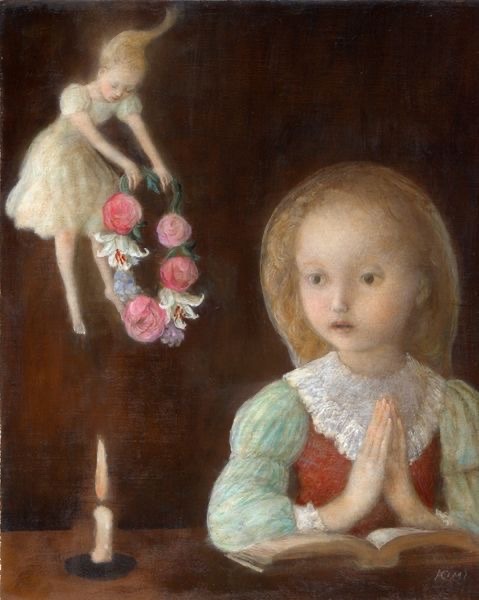
19 notes
·
View notes
Text
youtube
Are the kids alright?
According to recent news reports, they seem to be anything but, especially the girls. Earlier this year, the Centers for Disease Control and Prevention published a study that found that in 2021, almost three in five girls in high school considered suicide (Ghorayshi and Rabin), a number that has increased by 60% in ten years (Twenge).
Overall, the mental health of teenagers in the U.S.—already burdened by concerns about climate change and school shootings—only worsened thanks to pandemic-induced anxiety and isolation (Webster). This, of course, is on top of things such as figuring out their own individual identities (Webster).
If there’s anything that last week’s discourse surrounding Sydney Sweeney has proven, is that tween and teen girls have always had a rather tough time navigating that weird space between childhood and adulthood, that space where puberty feels like a mortal sin and any legitimate questions and concerns one might have about themselves or the world around them are blithely dismissed or treated as heresy.
But there was once a host of places where tween and teen girls could find some relief from the world at large and commune with their peers away from the gazes of those that sought to mock them. And, believe it or not, one of these spaces was online.
Hi, and welcome to Venusstadt. I’m Jiana. Today, I’m filming with my webcam in true early internet fashion to discuss Rookie, the feminist-leaning magazine founded by a teen for teens and tweens to give them a place to share their thoughts and creativity amid a society in which girls and girlhood were treated as nuisances.
TAVI GEVINSON
First, let’s discuss Tavi Gevinson.
Tavi, the youngest of three, was born in 1996 in Chicago. Her father was an English teacher, while her mother taught Hebrew and weaved (Knight).
Usually in a biography you would hear details like early childhood or adolescent experiences that led to the subject’s choice of career. However, Tavi is unique in that her career started when she was a child, and that that career was one that she chose herself.
Tavi became interested in fashion when she started to make collages in fourth grade out of pictures she cut out of magazines (Widdicombe). She first discovered blogging at a slumber party, when she was shown the personal site of her friend’s older sister, who also enjoyed fashion (Widdicombe). Tavi then used Blogspot to start her own site in 2008, calling it “Style Rookie” to fit in with the trending fashion blogs of the time (Vogue, YouTube, 1:10).
Through her posts, she documented her personal style, her thoughts on runway shows, and random anecdotes from her tween life. She was eventually propelled into the spotlight of the wider fashion industry when New York Magazine wrote a short article about her and her blog, appropriately titled “Meet Tavi, the 12-Year-Old Fashion Blogger” (Kwan).
Tavi’s initial rise to fame came at a time where people were really beginning to pay attention to the potential of the internet. Along with social media sites like MySpace and Facebook, which were already rather popular, people also began to read and start blogs (cite). These bloggers, who were in every niche from politics to mommy blogging to art, were basically proto-influencers. With Tavi also came Bryanboy, Scott Schuman of The Sartorialist, and Tommy Ton of Jak + Jil, all apart of the fashion blogosphere that was viewed as “democratizing” the industry, since it shifted some of the authority away from traditional sources like journalist and established critics to people who more closely resembled the average consumer (Widdicombe).
However, Tavi was unique due to the fact that she was like, 12 (Widdicombe). This, combined with her pretty impressive knowledge of fashion and culture and the mature, conversational tone with which she reportedly wrote, made her a spectacle to the adults of the fashion press (Widdicombe). Her youth also gave her the gusto to wear what she wanted as opposed to adhering to traditional fashion rules.
By 13, Tavi was sitting front row at various fashion shows (“Japan Goes Mad for 13-year-old,” The Cut). She attended John Galliano’s Spring 2010 Dior couture, where she met Karl Lagerfeld and Rei Kawakubo (Widdicombe). Later, she would also be the guest of honor at a holiday party for the latter’s brand Commes des Garcon (“Japan Goes Mad for 13-year-old,” The Cut).
While there were many who liked Tavi, she also had her fair share of detractors. Take, for instance, Sarah Mower of the Telegraph, who wrote of recognizing Tavi at the Dior show with a “sick lurch” and fantasized about yelling at Tavi’s father (Widdicombe). Ann Slowey, then fashion news director for Elle, questioned Tavi’s age and the likelihood that Style Rookie was actually written by her, while FIT’s Valerie Steele asserted that no one would care about Tavi if not for her age (Widdicombe). Tavi admitted that the attention got to be too much occasionally; when New York Magazine first brought attention to her blog, she even took a brief break from the internet (Widdicombe). According to Tavi:
“A lot of people on the internet have a problem with a young person doing well. I felt like, there were a lot of people who were there [in fashion spaces] because of their name, their money, or their family, and I didn’t have any of those things” (Kane).
Outside of her blog and media appearances, Tavi was still pretty much a normal tween, making collages and DIYs, attending public school with her peers, and shopping around at various thrift and vintage stories (Widdicombe). At the same time, she was speaking at conferences and guest writing for publications, using the money she earned from that to buy herself an occasional designer item (Widdicombe).
As with most young people, Tavi’s interests eventually changed, and she began to take less interest in fashion than she did with subjects such as “outsider art, feminism, gender identity, and media” (Knight).
ROOKIE MAGAZINE
As I mentioned in depth in my previous video essay on Mary-Kate and Ashley Olsen, children are seen as unsophisticated blank slates that can be trained to uphold pre-existing standards, and therefore must be rigorously surveilled and molded for the interest of wider society (O’Connor 4). “Children” here includes teenagers, who, since the category was invented by marketers in the 1950s, have been sites of anxiety and have represented social decline with their necking mobiles and rebellious attitudes (Thompson).
The concept of the “tween,” which denotes young people between eight and fourteen, was also invented by marketers in the early 90s (Guthrie 1). Newsweek in the late 90s described tweens as a “generation in fast forward, in a fearsome hurry to grow up” (Guthrie 1). Guthrie notes that “tween” was a label typically restricted to girls, who apparently felt more pressure to act older than their ages than boys were. Quoting Judith Halberstrom, Guthrie writes that:
“Female adolescence represents the crisis of coming of age as a girl in a male-dominated society. If adolescence for boys represents a rite of passage […] and an ascension to some version (however attenuated) of social power, for girls, adolescence is a lesson in restraint, punishment, and repression” (Guthrie 2).
I don’t believe I have to go into great depth explaining how media can be used to enforce social norms, but there are numerous examples involving media censorship (such as the Hays Code or the current Florida Book Bans) that demonstrate how industries or governments can use the media to maintain a certain status quo.
In their article “Narrative Analysis of [...] Etiquette in Teenage Magazines,” Ana C. Garner, Helen M. Stark, and Shawn Adams highlight a plethora of studies that demonstrated how teens put a lot of weight onto teen-oriented magazines as arbiters of taste and social etiquette (3). These magazines were often the go-to source as opposed to their parents due to their accessibility and ability to be read in private (Garner 3).
Magazines for teen girls largely included content that, you guessed it, promoted the standard gendered social norms expected of young women, such as how to dress, how to use makeup, and how to get the attention of boys (Garner 2). These articles and advertisements played an important role in the acculturation process of the young women who read them, in that they provided a specific set of cultural expectations that the girls figured they were expected to meet in order to be proper women. As stated by Garner, Stark, and Adams:
“…women’s magazines play a socializing function through the stories they tell in columns, features, and advertising. Readers encounter and then may initiate cultural myths of identity. According to Kellner, ‘Media stories provide the symbols, myths, and resources through which we constitute a common culture and through appropriation of which we insert ourselves into this culture.’ Magazines constitute part of the media stories that shape both society’s sense of culture and our sense of self in culture” (Garner 2).
Though such advice on makeup and boys might be helpful on an individual basis, such dictates could serve to be confusing at a time where a young girl is attempting to figure out her own identity, and did not really answer any of the questions a lot of girls would have about adolescence and adulthood (Guthrie 6). This is where Rookie magazine came in, but before we discuss Rookie, we ought to discuss Sassy.
Sassy was a teen magazine that was published from 1988 to 1996. It was notable for being a feminist teen magazine that spoke about serious subjects like suicide and STDs at a time where, again, most teen girl magazines were instructed girls on how to maximize their appearances in order to get dates (Talk of the Nation). Sassy drew a lot of ire from evangelical groups who boycotted it when it first started, which made advertisers not really want to touch it after a while (Talk of the Nation). It eventually stopped publishing and was absorbed into ‘TEEN magazine…which just talked about boys and dating again.
In spring 2010, Tavi mentioned on Style Rookie that she wanted to create a magazine inspired by Sassy and the riot grrrl zines of the 1990s, which were key parts of the third-wave feminist movement (Knight; Feliciano). Founding editor of Sassy Jane Pratt then reached out to make that happen (Knight).
At first Gevinson was in talks to sign on with Say Media to make this idea come to life, but she ultimately decided to pursue her idea independently so that “the man” wasn’t involved (Knight). According to Tavi’s father Steve, Rookie was independently financed “on family borrowing” (Knight).
Rookie first launched in September 2011 as Tavi entered her sophomore year of high school, filling the void that Sassy left in the teen publication industry when it shut down in 1996. In her first Editor’s letter, Tavi asserted that unlike other magazines like Teen Vogue or Seventeen, Rookie:
“…is not your guide to Being a Teen. It is not a pamphlet on How to Be a Young Woman. It is, quite simply, a bunch of writing and art we like and believe in. While there’s always danger in generalizing a whole group of people, I do think some experiences are somewhat universal to being a teenager, specifically a female one. Rookie is the place to make the best of the beautiful pain and cringeworthy awkwardness of being an adolescent girl” (Gevinson).
If you look at Rookie’s visual aesthetic throughout the years, you can definitely see how the riot grrrl zines also influenced it. The whole site had a whole DIY/collage aesthetic. As stated previously, riot grrrl was a major part of the third-wave feminist movement (Feliciano); Huse states that its zines were so important and impactful because they gave girls “an outlet for their own stories, a means to reclaim culture and language through their writing, and the ability to critique mainstream media with their own publication” (Huse 12).
That pretty much also describes Rookie’s primary draw. Like Sassy and its riot grrrl foremothers, Rookie magazine served as a way for teens to read about and discuss serious topics like birth control, mental health, and coming out in a safe space where they would not be shamed or ridiculed (Wilson). It was also feminist-leaning without the terminology that might be found in a Gender and Women's Studies textbook or journal. This meant that the language used was simple and more accessible, allowing progressive concepts to be shared with a younger audience (Kane).
Rookie also featured a pretty wide range of content, from interviews with artists, authors, and celebrities; to short fiction and poetry, film and literature reviews, DIY and personal style guides, cool playlists and illustrations—basically anything a teen might want. Much of this content was submitted by its tween and teen readers (Wilson), and submitting to Rookie was much like submitting to any other magazine. Each month there was a specific theme, and Rookie gave potential contributors ideas of what they could send in. There was also a poetry roundup, where Rookie would publish a bunch of submitted poetry each month. Of course, all submissions had to be unpublished, and Rookie rigorously fact-checked any non-fiction pieces. What was most impressive to me was that they took their young contributors seriously by compensating them for their work and creativity, though it was never officially disclosed how much they paid. The first three themes of Rookie were Beginnings, Secrets, and Girl Gang in September, October, and November of 2011; the last three were Rebirth, Spirit, and Evolution in the same months of 2018.
Advice questions could be sent in at any time. These questions could be answered in columns like “Ask a Grown Man” and “Ask a Grown Woman,” which allowed teens to ask various celebrities for advice (Kane). Celebrities who participated in this included Cyndi Lauper, Paul Rudd, Terry Crews, and even Hillary Clinton during her 2016 election campaign.
The website updated only three times a day, all in the afternoon when teens would be most apt to actually read the content: “after school, at dinner time, and when it’s really late and you should be writing a paper but are Facebook stalking instead” (Wilson).
The Rookie staff consisted of Tavi, a few grown people who handled the business and some of the editing, and other teen staff like Petra Collins, Hazel Cills, Arabelle Sicardi, and more. Staff members largely interacted with each other online via email and social media, but they occasionally met up for events like Rookie Road Trip, which was a four-week long tour in which teen staff members and Anaheed Alani packed into a van and drove across country from New York to Los Angeles to promote Rookie Yearbook One. The staff met up with the Rookie audience in venues like ice cream parlors, record stores, arcades, and theaters, where they did zine/collage-making events, poetry readings, and live performances (Gevinson).
The Rookie Yearbooks were printed yearly roundups of the online magazine content, edited and art-directed by Tavi, along with exclusive interviews and notes from celebrities (Peiser). There were a total of four to cover the magazine’s first four years. In addition to the yearbooks, Rookie also sold t-shirts, stickers, and posters.
END OF AN ERA
But, as I implied at the beginning, this website described by Healy as a “glistening, empowered world of girlhood” did not last. So, what happened?
The simplest answer is social media. But, truthfully, the newspaper industry has been unstable long before then. As Tavi pointed out in her final Editor’s Letter for Rookie, between January 2001 and September 2016, half of all newspaper jobs were cut from the industry (Gevinson, “Editor’s Letter 2018”). It’s also worth remembering that from 2015 to 2018, publications were laying off writers left and right in order to “pivot to video” content, mostly so they could cater to Facebook’s algorithms (Weissman).
According to that same letter, Rookie started running into financial issues as early as 2016, as social media engagement began to make up the bulk of the magazine’s online engagement as opposed to, say, people actually clicking on article links or leaving comments (Gevinson, “Editor’s Letter 2018”). While this technically be a good thing for, say, a zine that was firmly embedded within the social media with no central website, this was bad for Rookie because it rendered their ad-based revenue ineffective (Gevinson, “Editor’s Letter 2018”).
Tavi had no desire to ask her young readers to subscribe or donate to the site (Gevinson, “Editor’s Letter 2018”). She doesn’t explicitly explain why this was not an option, but my best guess is that she wanted the site to remain accessible to those young people who might not have had the money for a potential subscription or donation.
Tavi had previously been advised to work out some sort of marketing and engagement strategy before things took the turn that they did, but she said she never really listened because…well, she was a teenager (Gevinson, “Editor’s Letter 2018”). Who can blame her.
Anyways, in fall 2017, the Rookie team began searching for investors and/or partnerships they could do to keep the magazine running and strategize to figure out how to expand Rookie’s content offerings (Gevinson, “Editor’s Letter 2018”). However, most potential business partners wanted Tavi to promote herself as the brand’s face to get Rookie back on its feet before passing it off to a new, fresh figurehead that could lead the magazine into the next era (Gevinson, “Editor’s Letter 2018;” “Instagram''). By this time, Tavi was wanting to grow beyond Rookie magazine and pursue other ventures like acting, so she was on board with this concept (Gevinson, “Editor’s Letter 2018;” “Instagram'').
This didn’t pan out too well. Tavi did more sponsored social media content in order to market herself as an “it girl,” but even though these sponsorships let her avoid taking an income from struggling Rookie, she didn’t really enjoy the “hustle” of doing this, and neither did Rookie’s more progressive-minded audience, who knew when consumerism was being thrown in their faces (Gevinson, “Editor’s Letter 2018;” “Instagram”). This particularly came to a head when Tavi was criticized for contributing to gentrification while living in a sponsored luxury apartment in Brooklyn (Gevinson, “Instagram”). She was getting criticized for her personal finances as well since she was so present within the media, but Tavi wrote in Cut magazine that this was largely rooted in a misunderstand of how the media industry works, and that she was never really earning enough to live from such media appearances or photoshoots (Gevinson, “Instagram”). So the plan of Tavi promoting herself as a public figure in order to re-popularize the Rookie website fell apart.
Again, most media companies were already not doing well, so absorbing Rookie without such personality content from Tavi to help it up again was out of the question (Gevinson, “Editor’s Letter 2018”). Tavi explains it all very clearly, again, in the final Editor’s Letter:
“I have spent the fall learning what it would mean to sell Rookie to a new owner who could fund it, build it, or hire more people. I have learned that I can’t take on the responsibility that would come with remaining as its editor, or even transitioning it to a point where I could leave completely.
“…most media companies are also struggling. They can’t afford to buy other publications that are struggling, and/or they are understandably not interested in spending the money to get Rookie to sustainable profitability without the founder/editor/owner since day one—in other words, me. I can’t make that commitment, and at this moment, Rookie can’t exist without it” (Gevinson, “Editor's Letter 2018”).
Thus, on December 1, 2018, Rookie magazine officially ceased operations (Wilson), joining or preceding other sites by women such as the Hairpin, the Awl, the Toast, and Lenny Letter (Blum).
After Rookie folded, the staff at Man Repeller got together to discuss the changing nature of online media. Haley Nahman stated that:
“The part that makes me sad is understanding/learning that content that drives the most traffic (i.e., what keeps media brands in business) is not necessarily the highest quality, and that has become increasingly true as publications that put out good work flail, and those that put out, say, celebrity gossip or SEO-clickbait thrive” (Team Repeller).
Tavi’s goal from the Sassy- and riot grrrl-inspired beginnings of Rookie was always to make great content rather than simple filler articles (Knight). Ultimately, the internet took websites such as these for granted, opting instead to bury them under forgettable filler and clickbait content—something that has clearly continued into the current era. And, though there will always be people searching for good content online, sometimes that minority is not enough to sustain such a time-consuming publication like Rookie and many others.
Fortunately, Rookie remains up as an archival site. So at least we’ll always have the memories.
IMPACT
All in all, Rookie gave young people not only the confidence to share their ideas and express themselves through writing, photography, and DIYs, but also gave them the early experience to pursue such creative ventures at a professional level.
One of the most impressive things about Rookie is the number of names I recognized during my research from today and from my days as an impressionable young teenager on Tumblr. One such name is that of photographer Petra Collins, who was one of the original staff members for Rookie and participated in the Rookie Road Trip that first year in (Kane). Petra published a lot of photography on Rookie that then made the rounds on sites like Tumblr and Pinterest and formed the basis for a good many moodboards of the mid-2010s. She has since moved on to doing photography direction for fashion brands, as well as music videos for artists like Carly Rae Jepsen, Cardi B, and 2021 teen queen Olivia Rodrigo. Other Rookie alumni include NPR Music editor Hazel Cills, another founding Rookie Road Tripper, and Ashley Reese, who once wrote for Jezebel and Netflix’s Tudum, who you’ve probably seen on Twitter. There was also a lot of cross-pollination between Rookie and the Art Hoe movement’s founders and curators. While I don’t believe Ione Gamble ever wrote for Rookie, she was present at meetups for Rookie in London and cites Rookie as the influence for her zine Polyester, as well as Gal-Dem, and One of My Kind (OOMK) (Gamble).
Seeing the sheer number of people who either wrote for or read Rookie during their formative years is honestly amazing. And when you look at Tumblr or Pinterest’s mid-2010 years, it’s obvious that a lot of the “alternative teen girl aesthetic” that Tumblr came to be known for does sort of owe itself to Rookie as well, since so many girls on that site also happened to read Rookie and share images from Rookie to Tumblr or Pinterest. These images ended up on moodboards and continue to inspire online visual content to this day in one way or another. So when former Rookie staff member Arabelle Sicardi declared in 2021 that “pop culture is Rookie” to Teen Vogue—whose progressive content today likely owes a lot to Rookie as well—she isn’t kidding (Wilson). Without Rookie, media for young people, specifically women, girls, and non-binary people, would be a whole lot less endearing.
SEMI-CONCLUSION
That would’ve been a neat place to end this video, but I am going to get on my soapbox and say that it would be really beneficial if we had some sort of online space for tween and teen girls (and non-binary folks) today. Again, Teen Vogue has filled the younger, progressive void, but that’s not really a site where readers can submit things and be published without a pre-existing resume of some sort.
There’s also traditional social media giants like IG, Twitter, Tiktok, etc., but honestly even though they led to the demise of publishers like Rookie, they aren’t really a good replacement. Though anyone can share their thoughts now, these websites have arguably led to the shrinking of both our attention spans and the internet (Holderness). Also, algorithms are weird and perfectly good content is buried under the noise of search-engine optimization or content that simply isn’t good but very popular (example – subway surfer south park nonsense).
These also frankly aren’t safe spaces for young girls and women. In fact, social media was also linked to the teen girls’ mental decline, thanks to things like cyberbullying and the threat of sexual exploitation (Twenge). This is only going to get worse now that we have this wave of misogynistic backlash online, and teen girls who try to use social media can be at any point met with manosphere podcasters, tradwives, or straight-up violent incels who are typically their own male peers (Ewens). And now we also have the issue of AI-generators and deep fake adult materials; girls who post their faces online are likely going to have their faces stolen at one point or another.
At this point, any type of curated, online space for girls to get away from would be beneficial, but we’re so used to the convenience of social media now as a culture that it’s uncertain what form that online space will come in if ever. Hopefully, in one way or another, a new Rookie more suited to our times will pop up somewhere.
ACTUAL OUTRO
So that was depressing! But if you liked the non-depressing parts, and would like to be notified for more videos like this, be sure to click the subscribe button below. I also provide updates via the social media links listed below. This is obviously still a newer channel and I’m still kind of testing certain things out, so feel free to leave any feedback you have in the comments. For short-form biographies on women in the arts or other fun facts about culture, follow my TikTok or Instagram. Thanks for watching!
SOURCES
“Japan Goes Mad for the 13-Year-Old Fashion Blogger Tavi.” The Cut, 20 Nov. 2009, https://www.thecut.com/2009/11/japan_goes_mad_for_13-year-old.html.
“Meet Tavi, the 12-Year-Old Fashion Blogger.” The Cut, 22 July 2008, https://www.thecut.com/2008/07/meet_tavi_the_12yearold_fashio.html.
Blum, Dani. “Rookie Mag and the Shrinking Spaces to Grow Up Online.” Forbes, 5 Dec. 2018, https://www.forbes.com/sites/daniblum/2018/12/05/rookie-mag-and-the-shrinking-spaces-to-grow-up-online/?sh=29e11c636a66.
Ewens, Hannah. “Young, Male and Anti-Feminist––the Gen-Z Boys Who Hate Women.” Vice, 28 May 2021, https://www.vice.com/en/article/dyv7by/anti-feminist-gen-z-boys-who-hate-women.
Feliciano, Stevie. “The Riot Grrrl Movement.” New York Public Library Blog, 19 June 2013, https://www.nypl.org/blog/2013/06/19/riot-grrrl-movement.
Gamble, Ione. “What ‘Rookie’ Magazine Meant to a Generation of Young Female Writers.” i-D, 12 Aug. 2018, https://i-d.vice.com/en/article/ev3mkj/closure-rookie-website.
Garner, Ana C., Helen M. Sterk, and Shawn Adams. “Narrative Analysis of Sexual Etiquette in Teenage Magazines.” Journal of Communication, vol. 48, no. 4, 1998, pp. 59-78. https://doi.org/10.1111/j.1460-2466.1998.tb02770.x
Gevinson, Tavi. “Editor’s Letter.” Rookie, 1 Sep. 2011, https://www.rookiemag.com/2011/09/editors-letter/.
Gevinson, Tavi. “Editor’s Letter.” Rookie, 30 Nov. 2018, https://www.rookiemag.com/2018/11/editors-letter-86/.
Gevinson, Tavi. “Road Trip Diary: Week One.” Rookie, 29 June 2012, https://www.rookiemag.com/2012/06/road-trip-diary-week-one/.
Gevinson, Tavi. “Road Trip Diary: Week Two.” Rookie, 6 July 2012, https://www.rookiemag.com/2012/07/road-trip-diary-week-two/.
Gevinson, Tavi. “Road Trip Diary: Week Three.” Rookie, 13 July 2012, https://www.rookiemag.com/2012/07/road-trip-diary-week-three/.
Gevinson, Tavi. “Road Trip Diary: Week Four.” Rookie, 20 July 2012, https://www.rookiemag.com/2012/07/road-trip-diary-week-four/.
Gevinson, Tavi. “Road Trip Diary: Week Five.” Rookie, 30 July 2012, https://www.rookiemag.com/2012/07/road-trip-diary-week-five/.
Gevinson, Tavi. “Who Would I Be Without Instagram?” The Cut, 16 Sep. 2018, https://www.thecut.com/2019/09/who-would-tavi-gevinson-be-without-instagram.html.
Ghorayshi, Azeen, and Roni C. Rabin. “Teen Girls Report Record Levels of Sadness, C.D.C. Finds.” New York Times, 13 Feb. 2023, https://www.nytimes.com/2023/02/13/health/teen-girls-sadness-suicide-violence.html.
Guthrie, Meredith R. Somewhere In-Between: Tween Queens and the Marketing Machine. 2005. Bowling Green State University, PhD dissertation.
Healy, Claire. “Tavi Gevinson takes center stage.” Dazed, 12 Aug. 2016, https://www.dazeddigital.com/artsandculture/article/32372/1/tavi-gevinson-takes-centre-stage-broadway-rookie.
Huse, Kara-Leigh J. The Effects of Creating Feminist Zines on the Cultural Identity Development of Adolescent Girls: From Riot grrrl to Rookie. 2016. Saint Mary-of-the-Woods College, Graduate thesis.
Holderness, Cates. “The Internet is Getting Small and Boring. Long Live Tumblr.” Buzzfeed News, 6 Dec. 2018, https://www.buzzfeednews.com/article/catesish/internet-is-getting-small-and-boring-long-live-tumblr.
Kane, Laura. “Tavi Gevinson: Teenage ‘Rookie’ Still Figuring It Out.” The Star, 24 Oct. 2012, https://www.thestar.com/life/2012/10/24/tavi_gevinson_teenage_rookie_still_figuring_it_out.html.
Knight, Membah. “Tavi’s ‘Rookie’ Road Trip.” Chicago, 6 Sep. 2012, https://www.chicagomag.com/chicago-magazine/october-2012/tavis-rookie-road-trip/.
Kwan, Amanda. “Young Fashion Bloggers are a Worrying Trend to Parents.” USA Today, 12 Aug. 2008, https://usatoday30.usatoday.com/tech/webguide/internetlife/2008-08-12-girl-fashion-blogs_N.htm.
O’Connor, Jane C. The Cultural Significance of the Child Star. 2006, Brunel U, PhD dissertation.
Peiser, Jaclyn. “Rookie Cataloged a Generation of Girlhood.” New York Times, 13 Dec. 2018, https://www.nytimes.com/2018/12/13/style/rookie-tavi-gevinson.html.
Talk of the Nation. “To Girls, ‘Sassy’ Meant Something More.” NPR, 25 April 2007, https://www.npr.org/2007/04/25/9826498/to-girls-sassy-meant-something-more.
Team Repeller. “What Does the End of Rookie Magazine Say About the Future of Media?” Repeller, 6 Dec. 2018, https://repeller.com/rookie-magazine-and-the-state-of-media-2018/.
Thompson, Dean. “A Brief History of Teenagers.” Saturday Evening Post, 13 Feb. 2018, https://www.saturdayeveningpost.com/2018/02/brief-history-teenagers/.
Twenge, Jean M. “Teen Girls are Facing a Mental Health Epidemic. We’re Doing Nothing About It.” Time, 14 Feb. 2023, https://time.com/6255448/teen-girls-mental-health-epidemic-causes/.
Webster, Jamieson. “Teenagers are Telling Us that Something is Wrong with America.” New York Times, 11 Oct. 2022, https://www.nytimes.com/2022/10/11/opinion/teenagers-mental-health-america.html.
Weissman, Cale G. “Here’s an Abridged Timeline of Digital Media’s Pivot to Video.” Fast Company, 21 Feb. 2018, https://www.fastcompany.com/40534037/heres-an-abridged-timeline-of-digital-medias-pivot-to-video.
Widdicombe, Lizzie. “Tavi Says.” New Yorker, 13 Sep. 2010, https://www.newyorker.com/magazine/2010/09/20/tavi-says.
Wilson, Sophie. “The Legacy of Rookie Mag, Ten Years Later.” Teen Vogue, 7 Oct. 2021, https://www.teenvogue.com/story/the-legacy-of-rookie-mag-ten-years-later.
11 notes
·
View notes
Text

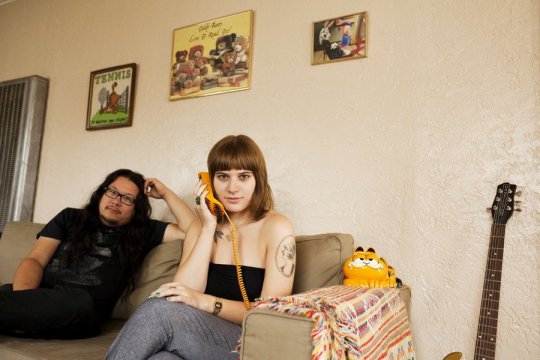


x
28 notes
·
View notes
